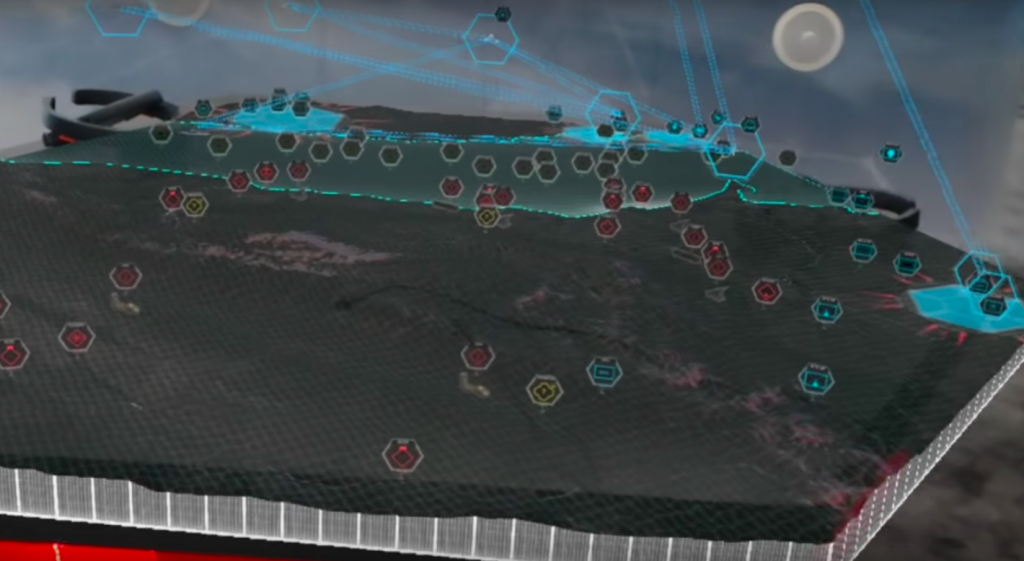EXCLUSIVE: What Multi Domain C2 May Look Like: Raytheon’s Rick Yuse
Posted on
FARNBOROUGH AIR SHOW: One of the best parts about covering an air show is bringing some of the gee-whizzery of the defense industry to the broader public, stuff beyond the metal tubing that flies fast and does neat things in the air.
Raytheon has been relatively quiet about its plans to develop systems for multi-domain operations, the US military’s evolving concept for defeating high-end adversaries with a coordinated onslaught from all five domains: land, sea, air, space, and cyberspace. But in a low-key way, the company is touting upgrades of some systems it already fields to help the four services and intelligence community connect all the data from sensors and weapons around the world and in space.
The video above will give you an idea of what may become the combat center of the future, but one dispersed around the world, instead of being concentrated in a few hyper-secure (but potentially targetable) facilities.
I spoke here with Rick Yuse, who has led Raytheon’s work on the Next Generation Jammer and is president of the company’s Space and Airborne Systems, about the company’s approach to multi-domain operations and its thinking on the latest Air Force plan for a JSTARS replacement, known as the Advanced Battle Management System.
Raytheon’s approach targets “five critical technology enablers,” Yuse says
- an open systems architecture,
- a high-speed secure network,
- multi-sensor data fusion,
- artificial Intelligence and machine learning, and
- resilient systems (self-healing networks and more), including GPS capabilities.
Those five enablers are critical to meet the new threat environment Yuse sees. as he described it in a recent speech. To translate his threat list into lay language:
- networked Integrated Air Defenses (IADs) that try to detect US aircraft without giving away their own location until they’re ready to fire;
- mobile Surface-to-Air Missile (SAM) batteries that relocate in minutes, not hours, resulting in what is known as the “fleeting target problem”;
- proliferation of Intercontinental Ballistic Missiles to new countries [like North Korea — ed.] with an apparent willingness to use them;
- weapons with hypersonic speed that can strike their targets before defenders can react;
- ever-expanding network attacks and cyber threats with little consideration for unintended consequences;
- direct ascent anti-satellite weapons with flight times from Earth to orbit measured in minutes;
- orbiting anti-satellite weapons that attack satellites in nearby orbits (“co-orbiting”) on demand; and
- ground-based lasers that intend to deny our use of space.
The US military won’t be able to respond quickly enough to such threats without what Yuse calls “a seismic shift in focus.” That shift is part of what Raytheon has been working on for several years, he told me. In his speech, Yuse put the goal this way:
“If data is king, then decision speed, which is the outcome we are striving to achieve, is queen. The two, when combined to yield timely decision quality information, made possible through the magic of artificial intelligence, will change the world of national security.”
Subscribe to our newsletter
Promotions, new products and sales. Directly to your inbox.

